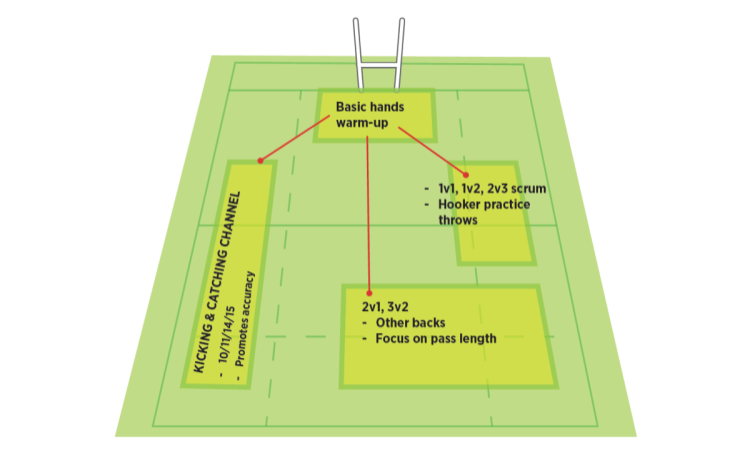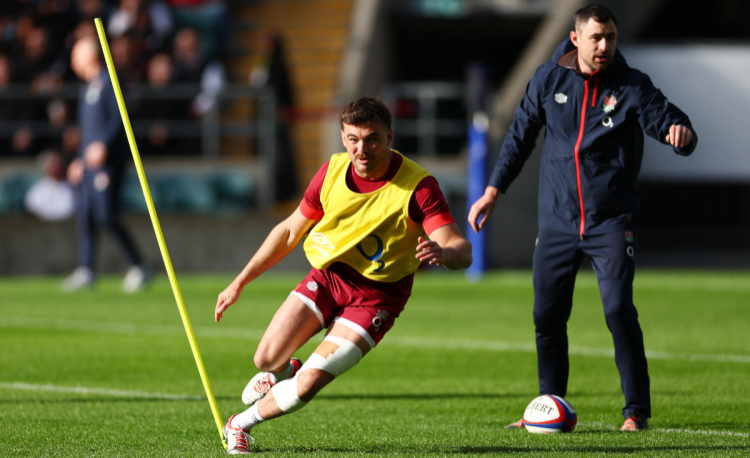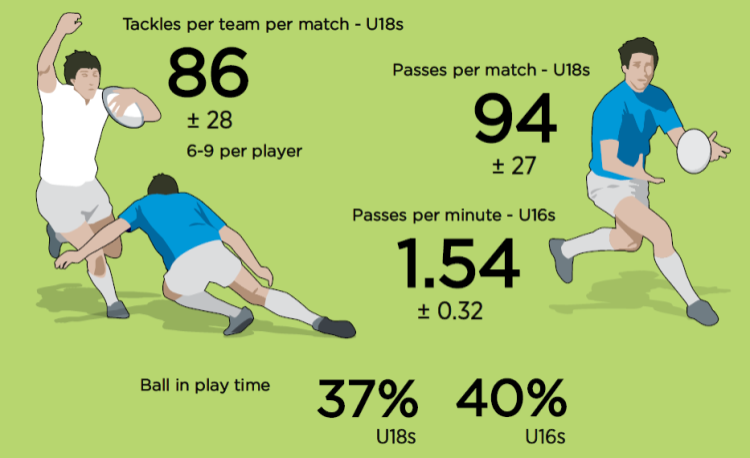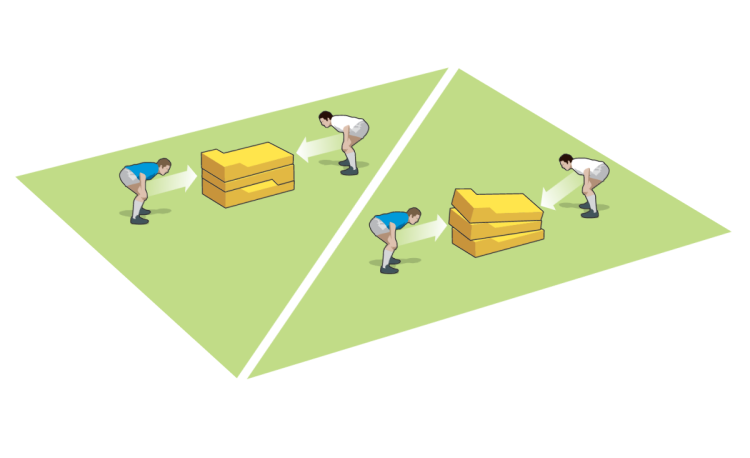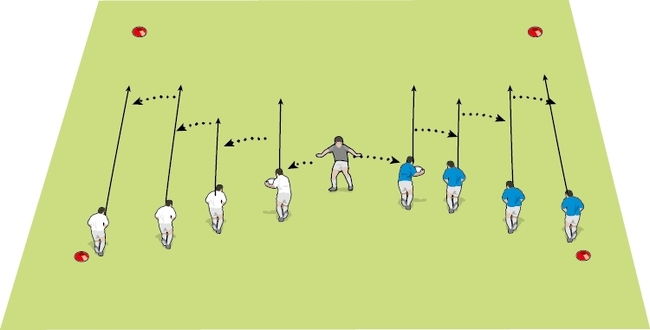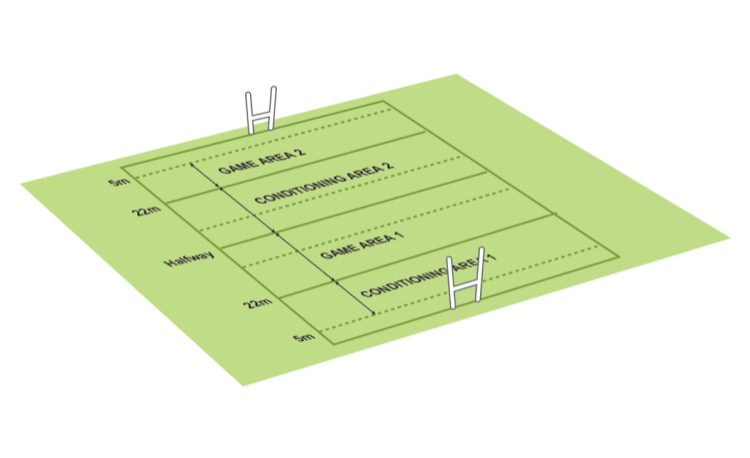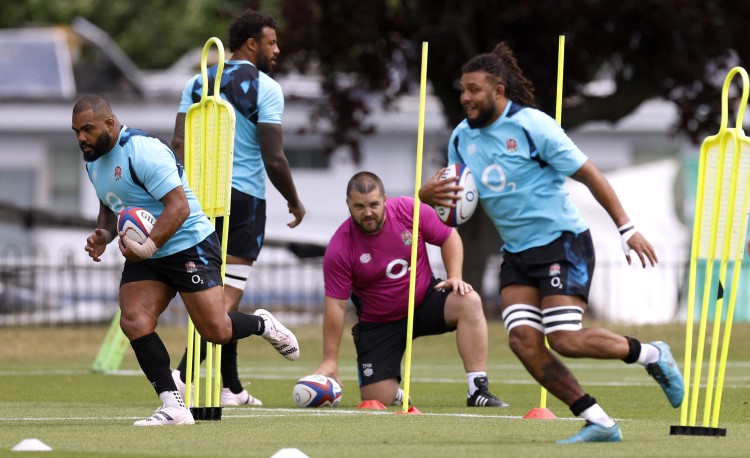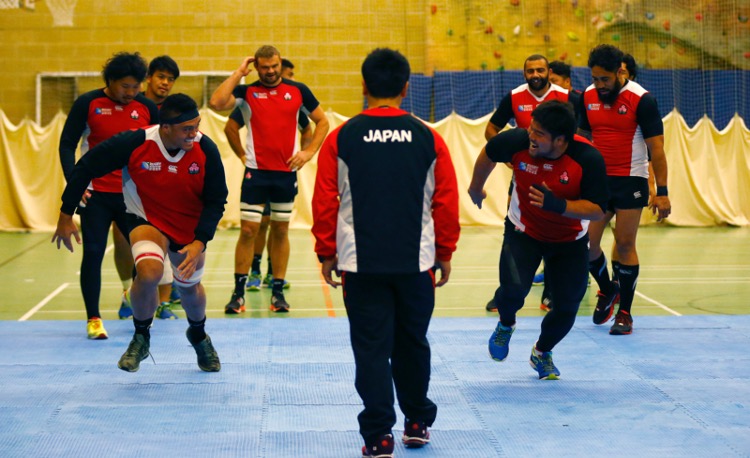Rugby coaching drills to increase speed
Fitness & Conditioningby Dan Cottrell

Here are three coaching drills which you can use to increase the speed of your rugby players.
1. "Leaning" for your quick players
To be quick off the mark, your players need to get their legs behind their bodies within the first five metres or so.
In other words, they need to lean forward as they start to sprint. This applies also because a player may need to "lean" into a defender or "lean" towards an attacker to make a tackle.
Drills:
Have your players stand on a line with their feet together. They lean forward until they feel they are going to overbalance. They then accelerate away for five metres.
Each player repeats the above "lean forward" drill, but this time individually. You stand about a metre or so away with a pole held at their chin height. The player has to lean forward until they feel they are going to over-balance. They then run under the pole without stooping or bending their back.
Two players race against each other. One player is nominated the "starter". They both lean forward. The second player is only allowed to start once the "starter" has moved one of their feet.
Holding the ball
Tests (1) have shown that holding the ball in two hands means the player is significantly slower than if the ball is carried in one hand.
My advice is that players should practise with both styles and learn to carry the ball to their own best advantage. Players will soon adapt.
2. Towing lighter loads
Towing weighted sleds has been used to improve sprinting. Research (2) shows that while it may increase power in the legs, heavier loads may disrupt the sprinting technique.
As a player strains to pull the load, their foot placement, stride length, angle of attack and arm movements are inhibited, which reduces their sprinting "shape".
Drills:
Use lighter loads on sleds, of no more than 5kg.
3. More touches on the ground
The more times the foot touches the ground, the more chance it has to power the rugby player forward. And "touch" (3) is the crucial word. If the foot lands heavily on the ground and does not "leap" away quickly, the player loses speed.
Plyometric training can improve the ground contact. It is a combination of explosive bounding, hopping and jumping exercises.
Drills should concentrate on light loads for jumps and a quick lift of the foot from the floor.
Drills:
Get your players to complete:
- High knee lifts over a short distance, followed by normal sprints away.
- Long strides over 15m, with the players trying to gain distance and height. Your players can use a weighted jacket for both exercises.
Rugby speed needs to be split into two distinct areas – the acceleration zone and the cruising zone.
In all positions and some situations you will need players who can be quick over the first five metres. In other cases, your players may only need time to "get going".
A prop does not need to sprint that often in a game and then only for short distances. Concentrating on their speed after 10m will not be as beneficial as spending time on their power over the first five metres.
Wingers and full backs will need more work on their cruising speeds over the 10m and beyond.
References:
1) Journal of Sports Sciences December 2003.
2) Journal of Strength and Conditioning Research 2002.
3) Track and Field News, Frank Dick, former GB athletics coach.
This article is taken from International Rugby Coaching. If you are serious about improving your coaching and want to stay informed with the latest expert coaching ideas, then click here to join International Rugby Coaching today.
Newsletter Sign Up
Coaches Testimonials

Gerald Kearney, Downtown Las Vegas Soccer Club

Paul Butler, Florida, USA

Rick Shields, Springboro, USA

Tony Green, Pierrefonds Titans, Quebec, Canada
Subscribe Today
Be a more effective, more successful rugby coach
In a recent survey 89% of subscribers said Rugby Coach Weekly makes them more confident, 91% said Rugby Coach Weekly makes them a more effective coach and 93% said Rugby Coach Weekly makes them more inspired.
Get Weekly Inspiration
All the latest techniques and approaches
Rugby Coach Weekly offers proven and easy to use rugby drills, coaching sessions, practice plans, small-sided games, warm-ups, training tips and advice.
We've been at the cutting edge of rugby coaching since we launched in 2005, creating resources for the grassroots youth coach, following best practice from around the world and insights from the professional game.




